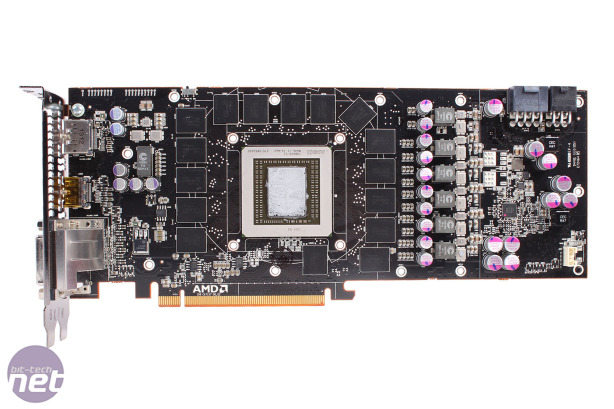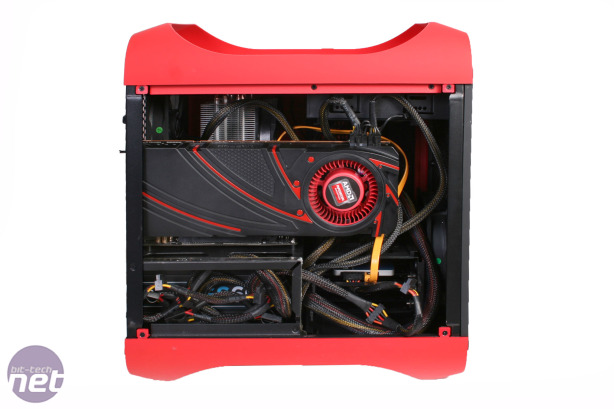
Is the AMD Radeon R9 290X too hot?
AMD unveiled its latest flagship graphics card, the AMD Radeon R9 290X, a couple of days ago and while price and performance were very competitive we, and many others, were concerned by the high temperature at which it ran and the noise created by its cooling fan.Under load the card runs at 95C, which is not only hot enough to burn you but also alarmingly close to what is generally considered the limit at which silicon can operate - around 100-105C. In comparison this card’s main rival, the Nvidia GeForce GTX 780, runs at around 80C when under load.
However, AMD insists this is by design and not a problem. The GPU incorporates technology that constantly monitors the cards temperature and adjusts its workload accordingly, so it should theoretically never go beyond this and overheat. But, performance will drop as the card lowers its workload to fit within its thermal envelope.
The question is, just how much is the card limited by this high running temperature? We run our tests in a large open-sided case, as do most other review sites – either that or an even more open-air test bed. But what about when the sides are on, or when the card is restricted to a small form factor case, and what happens when it has been running for hours on end? That’s what we’re aiming to find out here.
To do this we setup the 290X in the most popular mini-ITX case of the moment, the Bit Fenix Prodigy. Now, this isn’t the absolute smallest case on the market but it definitely has restricted airflow compared to much large cases, and it is extremely popular. Moreover it is a much more likely candidate than even smaller cases, because it fits conventional size components (the motherboard not withstanding) and can accommodate large graphics cards.
It should also be noted we didn’t stuff the case full of hard drives, nor add an optical drive, instead using a single SSD for the system installation. However, we again felt this was both representative of a modern day system likely to be built in such a case and we figured airflow would be restricted enough as we only enabled the rear exhaust fan (along with the main CPU cooler and GPU fan). If you were using lots of hard drives you’d probably use extra fans.
The first test we did was simply to setup a system in the Prodigy and get a baseline set of results while the system was cold and with the card in its Uber mode (55% fan). Our test system here is slightly different to our usual graphics benchmark rig but the GPU is enough of a limiting factor that the other slight component differences are largely negated, making comparison still worthwhile. We actually ended up with a slightly higher score than with our normal test rig but only by 9 points out of over 2100.
Our test system consisted of:
- CPU: Intel Core i7-4770k
- Motherboard: Asrock Z87E-ITX
- RAM: 4GB DDR3
- Storage: 255GB OCZ SSD
- PSU: Corsair 500Watt
- GFX: AMD Radeon R9 290X, Nvidia GeForce GTX 780
- Case: Bit Fenix Prodigy
For comparison we chose this card's most direct competitor, the Nvidia GeForce GTX 780.
The next thing we did was to load the system and set it going for an hour (or as long as it took) to ensure that the entire thing was as hot as it was going to get, with all the heat generated by the CPU and GPU permeated to all the other components. We had started off by loading both the CPU and GPU to really torture the system but we quickly found this was holding back the GPU. So to ensure we were loading the GPU as much as possible we simply looped Unigine Valley. We than ran it in benchmark mode to see what score we came up with.
We also took GPU temperature and decibel readings of the system, from a distance of 30cm from the chassis, to see just how intrusive the GPU fan noise was under load.
Our initial results – overpage – showed that the system wasn’t actually being stressed that much by the size of the Prodigy, thanks to its ample ventilation provided both via the perforated side panel right next to the GPU fan intake and the large grill on the top. So we also ran our tests with these openings covered, to create about as extreme an airflow-restricted environment as is likely to be encountered.
We tested with the fan set to its default 40% mode then flipped the uber mode switch to allow the fan to spin up to 55%. We then also cranked the fan max speed up to 100% to see if any more performance could be gleaned, and at what price in terms of noise.
Read on to find out what happened...

MSI MPG Velox 100R Chassis Review
October 14 2021 | 15:04










Want to comment? Please log in.